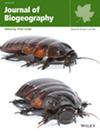The aim of the current study is to conduct a comprehensive phylogenetic analysis of the genus Arbacia to elucidate the evolution and phylogenetic relationships among all extant species and reevaluate the presence of geographic structure within species that have wide, fragmented distributions.
Specimens of Arbacia were collected from 34 localities spanning the Atlantic and Pacific Oceans, and the Mediterranean Sea.
We obtained sequences from three mitochondrial markers (COI, 16S and the control region and adjacent tRNAs) and two nuclear markers (28S and 18S; the latter ultimately excluded from the final analyses). Phylogenetic trees were constructed using maximum likelihood and Bayesian inference approaches. A time-calibrated phylogenetic tree was inferred using a relaxed Bayesian molecular clock and three fossil calibration points.
Our analysis supports the monophyly of the genus Arbacia, including the species Arbacia nigra (previously assigned to the monotypic genus Tetrapygus). The new phylogenetic topology suggests an alternative biogeographic scenario of initial divergence between Atlantic and Pacific subclades occurring approximately 9 million years ago. The dispersal and subsequent diversification of the Pacific subclade to the southeast Pacific coincides with the onset of glacial and interglacial cycles in Patagonia. In the Atlantic subclade, the split between A. punctulata and A. lixula occurred 3.01–6.30 (median 3.74 million years ago), possibly associated with the strengthening of the Gulf Stream current connecting the western and eastern Atlantic. Our study also reveals significant genetic and phylogeographic structures within both Atlantic species, indicating ongoing differentiation processes between populations.
Our study provides valuable insights into the evolutionary history and biogeography of the genus Arbacia and highlights the complex interplay between historical climate changes and oceanic currents in shaping the distribution and diversification of echinoids in the Atlantic and Pacific Oceans.



